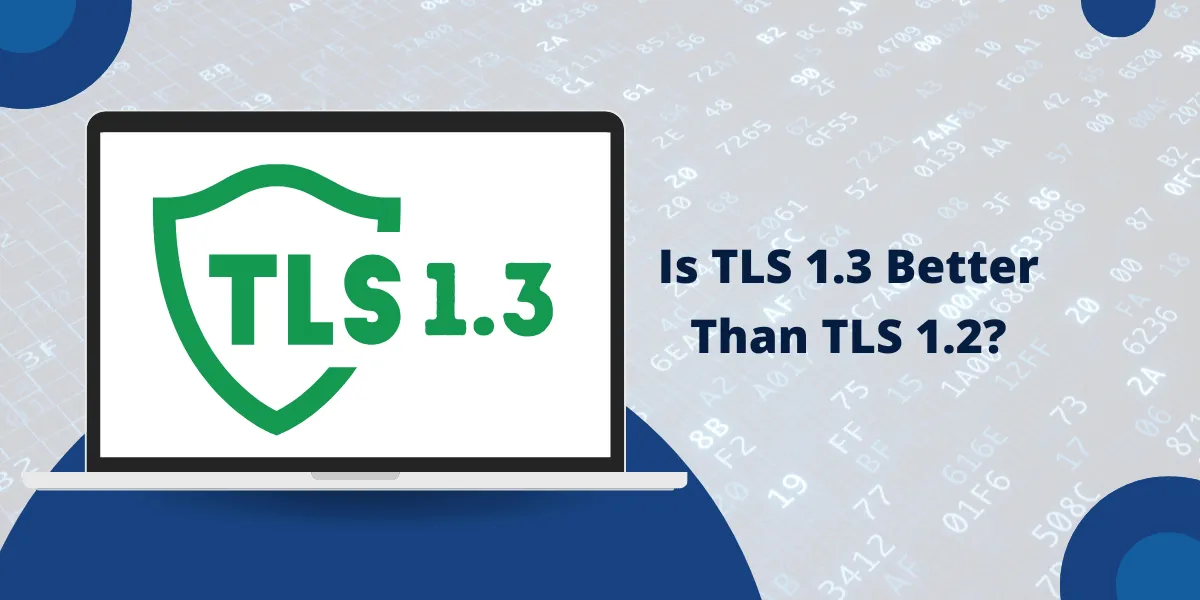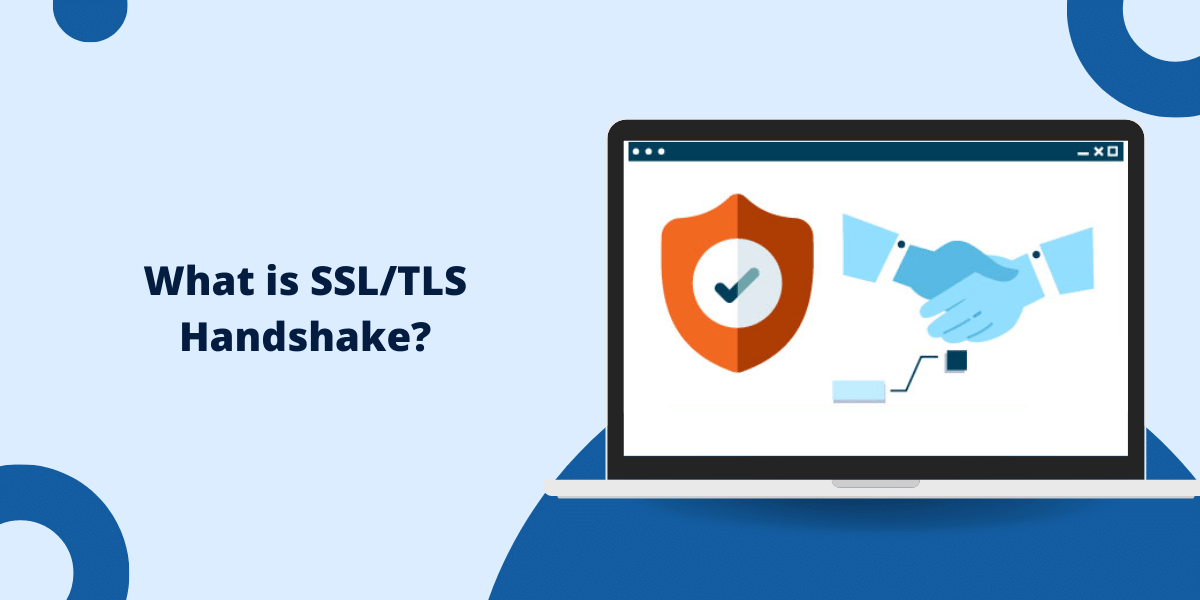A Basic Overview of TLS Protocol
Transport Layer Security (TLS) is a cryptographic protocol that provides security for communication over the Internet. Websites use TLS to secure connections and exchange sensitive information with users. TLS encrypts user data and verifies websites’ identities through certificates to prevent eavesdropping and tampering.
TLS has evolved over the years to incorporate new encryption algorithms, key exchange mechanisms, and vulnerabilities fixes. TLS 1.2 was defined in 2008 and saw widespread adoption. In 2018, TLS 1.3 was finalized, and significant changes were introduced aimed at improving security and performance.
With major browsers and websites moving to TLS 1.3, it is important to understand what benefits the latest version offers. This article examines how TLS 1.3 provides better security, speed, and privacy compared to the previous TLS 1.2 standard.
Key Takeaways
- TLS 1.3 offers several security and performance improvements over TLS 1.2, including faster handshake times, improved encryption algorithms, and better privacy protections.
- TLS 1.3 removes support for weaker cryptographic algorithms like SHA-1 and RC4, which are present in TLS 1.2. This improves security.
- TLS 1.3 introduces new encryption modes like AES-GCM that provide authenticated encryption and improved performance compared to TLS 1.2.
- The TLS 1.3 handshake requires fewer round trips, improving connectivity speeds on high-latency networks. The 0-RTT mode allows data transfer after the first message.
- TLS 1.3 prevents attacks like BEAST and Lucky 13 by making IVs and MAC keys dependent on each record rather than each connection.
- TLS 1.3 provides better forward secrecy support using ephemeral key exchanges like DHE and ECDHE. The exporter master key feature improves forward secrecy for application data.
- Improvements like Encrypted Server Name Indication (ESNI) and omitted certificate compression make TLS 1.3 connections more private and prevent attacks.
Why TLS 1.3 Better Than TLS 1.2?
Faster Handshake Time
One of the most notable improvements in TLS 1.3 is faster connection establishment. TLS uses a handshake process to negotiate encryption algorithms, exchange keys, authenticate identities, and establish secure parameters before starting data transfer.
The TLS 1.2 handshake requires two round trips for a full key exchange and four round trips in total. TLS 1.3 reduces this to one round trip for the key exchange and three messages in total. This means the server can send encryption keys and finish authentication faster.
Some key differences that allow a quicker TLS 1.3 handshake are:
- Using Key Exchange Algorithms with Smaller Keys: TLS 1.3 prefers ECDHE key exchanges using elliptic curve cryptography, which uses smaller key sizes compared to the DHE algorithm in TLS 1.2. This reduces computation and communication overhead.
- Combining Multiple Steps: The TLS 1.3 handshake combines certain steps, such as server authentication, key generation, and handshake confirmation, into a single Encrypted Extensions message.
- Removing Compression: TLS 1.3 encryption removes legacy compression methods like DEFLATE which reduces an extra round trip.
- 0-RTT Data: 0-RTT is an extension that allows clients to send application data on the first message if a previous TLS 1.3 connection existed. This bypasses the handshake completely.
As networks get faster, the multiple round trips required by previous TLS versions result in lag and delays. By reducing handshake messages, TLS 1.3 provides significantly better performance, especially on high-latency networks.
Improved Encryption Algorithms
TLS relies on symmetric encryption algorithms to secure the data transferred after establishing a connection. TLS 1.2 supported AES-128-CBC and AES-256-CBC as the standard encryption modes. However, CBC (Cipher Block Chaining) modes have vulnerabilities like BEAST, Lucky 13, and padding oracle attacks.
TLS 1.3 deprecates CBC ciphers and uses the following improved encryption algorithms:
- AES-128/256-GCM: Galois Counter Mode authenticated encryption offers better performance than CBC. The integrated authentication prevents padding Oracle attacks.
- ChaCha20-Poly1305: A high-speed stream cipher that provides authenticated encryption. It has performance benefits on software-based implementations.
- AES-256-CCM: This is AES encryption in Counter with CBC-MAC mode that provides authenticated encryption. It is suited for hardware like ARM chips.
Authenticating the connection helps confirm data integrity and prevent tampering. These modern encryption algorithms are faster and more secure against padding attacks compared to TLS 1.2 ciphers.
For key exchange during the handshake, TLS 1.3 also removes finite field-based Diffie-Hellman (DHE) groups with weak bits like 1024-bit and 2048-bit. Instead, it defines new DHE groups with 2048-bit and 3072-bit keys minimum and prefers ECDHE with curves like X25519 and P-256.
Improved Forward Secrecy
Forward secrecy protects past encrypted sessions even if the server’s private key gets compromised in the future. Both TLS 1.2 and 1.3 provide forward secrecy using ephemeral Diffie-Hellman key exchanges, which generate temporary session keys.
However, TLS 1.3 enhances forward secrecy protections through:
- ECDHE Key Exchange Mandate: TLS 1.3 requires ECDHE for ephemeral key exchanges, which provide faster and more efficient forward secrecy than plain DHE.
- Exporter Master Key: TLS 1.3 derives an Exporter Master Key (EMK) separate from the encryption keys to encrypt application data. This provides forward secrecy for both handshake and application data.
- Key Rotation: TLS 1.3 connections can create new encryption and EMK keys after a certain data limit is reached through a process called key rotation. This limits the impact of compromise.
- Key Destruction: TLS 1.3 explicitly destroys handshake keys after use and overwrites variables once they are no longer required.
Removal of Weak Cryptographic Primitives
Previous versions of TLS supported weak cryptographic algorithms and protocols to provide compatibility with legacy clients. However, many of these outdated primitives are insecure and vulnerable to attacks.
TLS 1.3 removes support for the following weak cryptographic elements:
- SHA-1 Hash Algorithm: The use of SHA-1 is deprecated across the protocol. TLS 1.3 only allows the stronger SHA-2 and SHA-3 hash algorithms, like SHA-256.
- Legacy PFS Groups: Finite-field Diffie-Hellman groups with weak bits like 1024-bit and 2048-bit are removed. Only 2048+-bit GF and ECDHE curves are allowed.
- Static RSA Key Exchange: RSA key transport using static keys is no longer supported for handshake. The key exchange must use DHE or ECDHE.
- RC4 Stream Cipher: The RC4 stream cipher is dropped due to weaknesses in the algorithm.
- Compression: TLS compression methods like DEFLATE are removed.
- Anonymous Suites: Anonymous Diffie-Hellman modes that hide certificates are prohibited.
- Pre-Shared Keys: The vulnerable PSK handshake is deprecated.
Protection Against Traffic Analysis
Traffic analysis is a technique where the patterns of encrypted traffic are observed to extract information about the nature of communication. Although TLS encrypts data in transit, older versions were still vulnerable to traffic analysis methods.
TLS 1.3 implements the following protections to prevent traffic analysis and make connections more private:
- Encrypted SNI: Server Name Indication (SNI) reveals domain information that can be eavesdropped during handshakes. Encrypted SNI hides this metadata.
- Omitted Certificate Compression: Certificate compression methods can reveal domain patterns. TLS 1.3 encrypts certificates but does not compress them.
- Improved Record Padding: TLS 1.3 adds dummy application data to mask content length.
- Key Update RPC: Encryption keys are rotated during connections to change traffic patterns.
Resilience Against Common Attacks
Over the years, cryptanalysts have discovered various flaws and weaknesses in TLS protocols that can be exploited to break connections and decrypt data. TLS 1.3 learns from these attack vectors and includes mitigations for them:
- Downgrade Attacks: TLS 1.3 removes weak ciphers and hashes, preventing downgrade attacks that force their usage. Fallback prevention using fingerprints also stops TLS version downgrades.
- BEAST: BEAST attack exploited IV predictability in TLS CBC ciphers. TLS 1.3 GCM encryption prevents this.
- BREACH: Special padding in TLS 1.3 blocks compression side channels like BREACH.
- Lucky13: TLS 1.3 uses AEAD ciphers that prevent Lucky13 timing attacks targeting CBC-mode MAC verification.
- Heartbleed: Omission of heartbeat extension prevents vulnerable memory leaks.
- Ticketbleed: More secure ticket keys prevent theft of session secrets.
- Truncation Attacks: Added length checks prevent buffer over-reads that cause vulnerabilities like Heartbleed.
- Renegotiation: Secure renegotiation principles and APIs prevent man-in-the-middle attacks during handshake.
- Cross-Protocol Attacks: TLS 1.3 is not designed to be vulnerable to attacks like DROWN, which exploit the interaction between SSLv2 and TLS.
- State Machine Attacks: Improved state machine transitions prevent invalid state exploits.
TLS 1.3 also introduces new extension points, such as Certificate Transparency and OCSP stapling for revocation checking. Overall, the latest version demonstrates how to learn from past incidents and experiences to create a more secure protocol.
Adoption Challenges
Despite the improved security and performance, TLS 1.3 adoption has some challenges:
- Initial Compatibility Issues: Like any new standard, websites need to ensure client-side browser and backend server support for TLS 1.3 before deploying it. This requires upgrades.
- Lack of Middlebox Support: Many enterprise networks deploy TLS intercepting middleboxes, which break TLS 1.3 connections. Products need updates to work properly.
- Server-Side Load Balancer Config: Load balancers and reverse proxies need explicit configuration to pass through TLS 1.3 connections to backend web servers.
- Latency Concerns: According to some analyses, the reduced round trips in TLS 1.3 can decrease overall security margins in highly latent networks. This requires further research.
- Migration Complexity: TLS ecosystem changes, like SNI encryption, require redesigning certificate issuance and hosting architecture, which takes time.
Final Words
TLS 1.3 represents a major evolutionary leap for transport security on the Internet. By correcting weaknesses, improving encryption, and optimizing handshakes, TLS 1.3 offers superior protection and performance compared to previous versions like TLS 1.2.
Adoption is rising with major sites like Google, Mozilla, Twitter, and Cloudflare switching to TLS 1.3. Browser support is also widespread, with Chrome, Firefox, and Safari implementing the latest protocols. While migration can be complex, the long-term benefits are substantial.
TLS 1.3 will become the new standard for encrypted web traffic in the future. The 1.3 version demonstrates how protocols can enhance protections according to new developments and threats. With its extensive improvements, TLS 1.3 provides ideal transport security for the modern internet age.
Frequently Asked Questions (FAQs)
What are the main differences between TLS 1.2 and 1.3?
The main differences are faster handshake time (1-RTT), better encryption algorithms like AES-256-GCM, enhanced forward secrecy, removal of obsolete cryptographic primitives, resistance to common attacks like BEAST and Lucky13, and privacy improvements against traffic analysis.
How does TLS 1.3 provide faster performance?
Optimizations like one-round-trip key exchange, removing compression, and using 0-RTT data allow faster connection setup. Smaller ECDHE keys also reduce computation compared to TLS 1.2.
What new encryption algorithms does TLS 1.3 use?
TLS 1.3 uses AES-128/256-GCM, ChaCha20-Poly1305, and AES-256-CCM authenticated encryption, which are faster and more secure than TLS 1.2 algorithms.
How does TLS 1.3 improve forward secrecy protections?
Mandatory ECDHE, exporter keys for app data encryption, and explicit key destruction provide better forward secrecy compared to TLS 1.2.
What weak cryptographic elements does TLS 1.3 remove?
SHA-1, 1024/2048 bit Diffie-Hellman, RC4 cipher, compression methods, anonymous suites, and static key RSA exchange are all removed in TLS 1.3.
What privacy protections does TLS 1.3 offer against traffic analysis?
Encrypted SNI, omitting certificate compression, improved record padding and key rotation help mask traffic patterns and prevent traffic analysis attacks.
What common TLS attacks does TLS 1.3 provide resilience against?
It is designed to prevent downgrade, BEAST, BREACH, Lucky13, Heartbleed, TicketBleed, truncation attacks, insecure renegotiation, and more.

Priya Mervana
 Verified Web Security Experts
Verified Web Security Experts
Priya Mervana is working at SSLInsights.com as a web security expert with over 10 years of experience writing about encryption, SSL certificates, and online privacy. She aims to make complex security topics easily understandable for everyday internet users.


![What is Certificate Revocation List [CRL]?](https://sslinsights.com/wp-content/uploads/2024/01/certificate-revocation-list-crl.png)